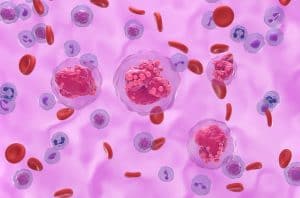Industry cautions over probe into use of NICE approved drugs
pharmafile | September 10, 2009 | News story | Sales and Marketing | NICE, hc
The UK pharma industry has urged caution over data collected on the use of NICE-approved drugs on the NHS that indicates higher than predicted use, saying it does not present the whole picture.
A new study by the NHS Information Centre (NHS IC) compared the predicted use of medicines, as calculated by NICE, with their actual, or observed use.
Results of 12 appraisals where a comparison could be made showed that actual use was higher than the predicted for seven, and lower for five. But the ABPI claims the basis on which the predictions were made was too low and needs further development.
Dr Richard Barker, director general of the ABPI, said: “We shall be the first to applaud if more patients are getting NICE-approved medicines than forecast in most disease areas.
“Enthusiasm over the results is tempered by the knowledge that not only are there other medicines being prescribed less than predicted but also, even where uptake is generally good, there are still areas of the country where postcode prescribing is alive and well.
“However, it is essential that the way of calculating the ‘predicted’ use of medicines is as robust as possible.”
The NHS IC study was carried out as part of last year’s Pharmaceutical Price Regulation Scheme (PPRS), which came into operation on 1 January 2009.
The Department of Health (DH) and the ABPI agreed that the DH would review the variation in uptake of selected medicines in the NHS in England.
Key findings were:
– Out of the 12 appraisals where a comparison could be made, actual use was higher than the predicted use for seven, and lower for five.
– For two drugs, safety warnings issued since the publication of NICE guidance, have resulted in drug withdrawal and more restricted use, respectively.
– For one of the drugs considered, it was not possible to convert the expected number of patients into an expected volume of drug, so no meaningful assessment of the use could be made.
The ABPI has long complained the UK is slower to take up new medicines compared to other European countries, even when drugs are NICE approved. This may be because doctors prefer to stick to what they know and can be weary of new products.
In negotiations over the last version of the PPRS, the ABPI called for new incentives to be awarded to doctors prescribing newly approved medicines to try and reverse the trend and promote innovation.
The results from the NHS IC study showing actual use is higher than predicted use do not aid its argument, whether or not the findings are accurate.
The ABPI says it will discuss the matter further with NICE and the Department of Health, and has also suggested the statistics on the use of such medicines in England be set against a comparison of uptake in other comparable European countries.
Related Content

NICE recommends migraine treatment for NHS use
The National Institute for Health and Care Excellence (NICE) has shared draft guidance recommending AbbVie’s …

GSK’s Jemperli recommended by NICE for endometrial cancer treatment
GSK has announced that the National Institute for Health and Care Excellence (NICE) has recommended …

NICE recommends SC treatment of AbbVie’s Tepkinly for patients with DLBCL
AbbVie has announced that the National Institute for Health and Care Excellence (NICE) has recommended …







